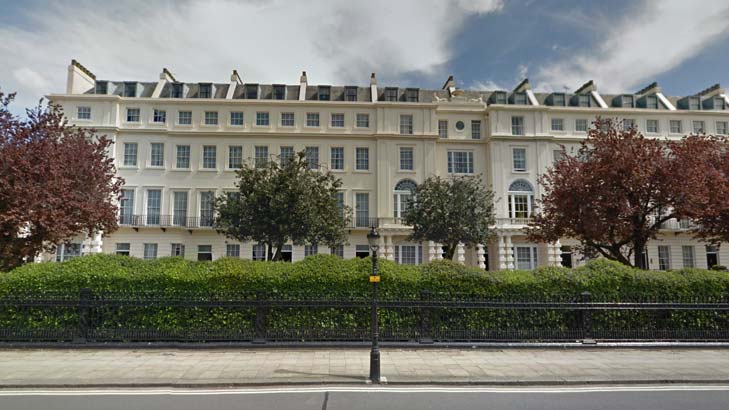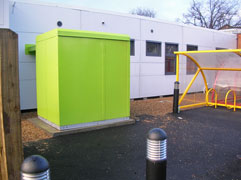Heat Pump Myths
There are many widespread myths and misconceptions concerning ground source heat pumps that are holding back the adoption of this efficient heat transfer technology. Some of the myths are listed below, together with the realities.
"Ground Source Heat Pumps are only suitable for well insulated properties"
It is true that a ground source heat pump is well suited to a well insulated property. However, it can be designed to heat any property. Any heating system will work more effectively in a well insulated property!
With a ground source heat pump – or any other form of heating – you would be well advised to install loft insulation and other energy saving measures to save on your heating bills.
"Heat Pumps do not perform well"
The truth is that a ground source heating system needs to be well designed to match the property being heated. It needs to be well installed and properly commissioned to work well. The same is true of every other kind of heating system: a gas fired system will not work well if undersized – or oversized – for the building, or if the heat distribution system is undersized – or oversized. A gas boiler system will not perform well if it has not been properly installed or if it needs servicing.
A heat pump system works on the same principles as a domestic refrigerator: a refrigerator is one of the most reliable and long lasting pieces of equipment you can buy for your house!
Well designed GSHP installations work well: ask your installer for details of his installations. Ask for references from his clients.
"Ground Source Heat Pumps need lots of ground"
While a horizontal ground loop does require space for installation, there is an alternative of drilling vertical boreholes that only require a small surface footprint. You will not need to allocate space for storing fuel once the installation is complete.
When the ground works have been installed you will have an invisible heating system with no limitations on the use of your ground.
"Heat Pumps need back up systems"
A well designed system can be designed to meet all the heating needs of the building and all the hot water needs with no back-up system needed. Well installed ground source systems are very reliable and will outlast all combustion based systems.

"Heat Pumps are expensive"
It is true that a ground source heating system is more expensive to install than a gas boiler system. However, it is much cheaper to run, cheaper to maintain and will last much longer than a gas boiler. Heat pump installations now attract an up-front grant, and can be installed free of Vat. On full life cycle costing, ground source heating is cheaper than using gas boilers.
The National Trust installed a heat pump at its Plas Newydd property (pictured right) and saves £40,000 a year over its previous oil fired heating.
In commercial buildings where cooling is needed, summer heat can be stored in the ground and recycled back to the building in winter. The payback period can be less then seven years without factoring in any health benefit from zero noxious gas emissions on site, or the environmental benefit of 75% lower carbon emissions.
There is no risk of carbon monoxide poisoning nor any any health risks from nitrogen dioxide or sulfur dioxide emissions because heat pumps emit no gases on site because they do not employ combustion.
Large commercial systems also have the possibility of earning revenue from "demand side response" contracts if they are prepared to defer running their heating – or cooling – systems for very brief periods around peak electric demand during the day to times of lower demand for electricity.
"Heat Pumps require underfloor heating"
Heat pump systems are well matched to underfloor heating circuits in new properties. Underfloor heating systems have advantages whatever the heat source for the building. However, heat pump systems do not require underfloor heating distribution as heat can be distributed via radiators or air handling systems.
The design of any heating system needs to be matched to the heat distribution system in the building, the levels of insulation in the building and the use to which the building is being put. Any heating system needs to be properly designed and installed to work well.
For an older building it may be appropriate to specify a high temperature heat pump to circulate water at up to 80°C – like a gas boiler – to existing radiators instead of refurbishing the heat distribution system in the building.

"Heat Pumps are not suitable for old buildings"
Ground source heat pumps have been successfully installed in eighteenth and nineteenth century buildings (see Cambridge Terrace, Regents Park, pictured right) and perform well. Older buildings often benefit from larger thermal mass and therefore greater thermal inertia: they retain heat for longer, once heated. The heating control system can set to provide more gentle heat for longer periods than a gas boiler, which is typically set to give short bursts of high temperature for brief periods. You will need to employ an installer who understands the needs to which the building is being put.
"Heat Pumps cannot provide enough hot water"
Modern heat pump systems can be designed to meet all of a building's need for space heating and domestic hot water. It can also be designed to meet the cooling needs of the building in summer.
"Heat Pumps are noisy"
A ground source heat pump makes less noise than an oil boiler or a gas boiler. An air source heat pump is located outside and has moving parts to allow it to exchange heat with ambient air: careful positioning limits the noise to a low level.
"Heat Pumps are not 'renewable' because they use electricity"
A ground source heat pump derives most of its heat from the ground by heat exchange: totally renewable energy. It uses a small amount of electricity to effect a large amount of heat transfer from the ground into the building: the source of electric generation may be from renewable sources or from the grid: the carbon factor from grid electricity is reducing each year and is expected to fall to very low values within the lifetime of any new installation. See Decarbonising the grid.
There is also the option of obtaining green electricity from a renewable energy electricity supplier.
Contact ICAX
We prefer to work in conjunction with architects and M&E consultants from the earliest stage to ensure that there is a clear understanding of how we can help to deliver a sustainable building with a high carbon offset.
Please email inquiries to
or give us a ring on 020 7253 2240.
Ground Source Heating Ground Source Cooling Ground Source Energy
See also: Ground Source Heat Pumps | Banking on IHT
See also: Seasonal Thermal Energy Storage



